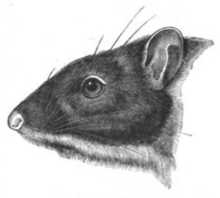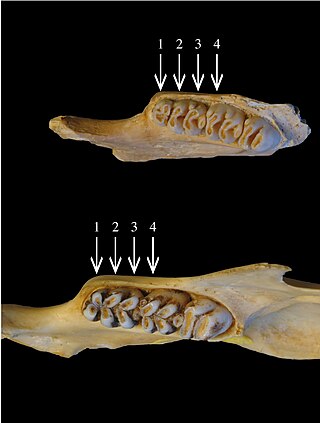
The Flores giant rat is a rodent of the family Muridae that occurs on the island of Flores in Indonesia. It has been recorded in Rutong Protection Forest. The species is found in primary, secondary and disturbed forest over a wide range of elevations. Its head and body length is 41–45 cm (16–17.5 in) and its tail length is 33–70 cm (13–27.5 in). These dimensions are about twice as large as those of a typical brown rat, which suggests about eight times the body mass.

Megalomys luciae, also known as the Saint Lucia pilorie or Saint Lucia giant rice-rat, as well as several variant spellings, is an extinct rodent that lived on the island of Saint Lucia in the eastern Caribbean.

Oryzomys is a genus of semiaquatic rodents in the tribe Oryzomyini living in southern North America and far northern South America. It includes eight species, two of which—the marsh rice rat (O. palustris) of the United States and O. couesi of Mexico and Central America—are widespread; the six others have more restricted distributions. The species have had eventful taxonomic histories, and most species were at one time included in the marsh rice rat; additional species may be recognized in the future. The name Oryzomys was established in 1857 by Spencer Fullerton Baird for the marsh rice rat and was soon applied to over a hundred species of American rodents. Subsequently, the genus gradually became more narrowly defined until its current contents were established in 2006, when ten new genera were established for species previously placed in Oryzomys.
Nesoryzomys swarthi, also known as the Santiago nesoryzomys or Santiago Galápagos mouse, is a species of rodent in the genus Nesoryzomys of family Cricetidae. It is found only on Santiago in the Galápagos Islands. Its natural habitat is subtropical or tropical dry shrubland.

The Galápagos rice rat, also known as the Galápagos oryzomys, is a species of rodent that is endemic to the Galápagos Islands.

Mindomys hammondi, also known as Hammond's rice rat or Hammond's oryzomys, is an endangered species of rodent in the tribe Oryzomyini of family Cricetidae. Formerly considered to be related with Nectomys, Sigmodontomys, Megalomys, or Oryzomys, it is now placed in then genus Mindomys, but its relationships remain obscure; some evidence supports a placement near Oecomys or as a basal member of Oryzomyini.
The Hispaniolan edible rat is a recently extinct species of rodent in the family Echimyidae. It is the only species in the genus Brotomys. It was endemic to the island of Hispaniola in the Caribbean, in what is today the Dominican Republic and Haiti. Its natural habitat was subtropical or tropical moist lowland forests.

Oryzomyini is a tribe of rodents in the subfamily Sigmodontinae of the family Cricetidae. It includes about 120 species in about thirty genera, distributed from the eastern United States to the southernmost parts of South America, including many offshore islands. It is part of the clade Oryzomyalia, which includes most of the South American Sigmodontinae.
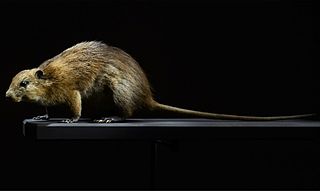
Megalomys is a genus of rodent in the family Cricetidae, part of the tribe Oryzomyini. The genus contains six large rodents from various Caribbean islands, of which two are known to have survived into modern times, but all of which are now extinct. The last species to survive was M. desmarestii from Martinique, which became extinct after the Mount Pelée eruption in 1902.

Oryzomys antillarum, also known as the Jamaican rice rat, is an extinct rodent of Jamaica. A member of the genus Oryzomys within the family Cricetidae, it is similar to O. couesi of mainland Central America, from where it may have dispersed to its island during the last glacial period. O. antillarum is common in subfossil cave faunas and is also known from three specimens collected live in the 19th century. Some historical records of Jamaican rats may pertain to it. The species probably became extinct late in the 19th century, perhaps due to the introduction of the small Indian mongoose, competition with introduced rodents such as the brown rat, and habitat destruction.

"Ekbletomys hypenemus" is an extinct oryzomyine rodent from the islands of Antigua and Barbuda, Lesser Antilles. It was described as the only species of the subgenus "Ekbletomys" of genus Oryzomys in a 1962 Ph.D. thesis, but that name is not available under the International Code of Zoological Nomenclature and the species remains formally unnamed. It is currently referred to as "Ekbletomys hypenemus" in the absence of a formally available name. The species is now thought to be extinct, but association with introduced Rattus indicates that it survived until before 1500 BCE on Antigua.
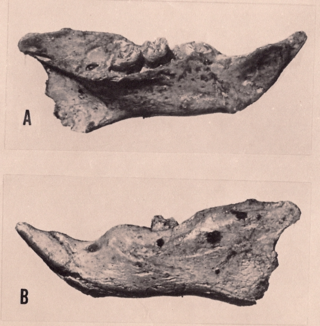
Megalomys audreyae, known as the Barbudan (?) muskrat or the Barbuda giant rice rat, is an extinct oryzomyine rodent from Barbuda in the Lesser Antilles. Described on the basis of a single mandible with the first molar missing and an isolated upper incisor, both of uncertain but Quaternary age, it is one of the smaller members of the genus Megalomys. Little is known about the animal, and its provenance and distinction from "Ekbletomys hypenemus", an even larger extinct oryzomyine that also occurred on Barbuda, have been called into question. The toothrow in the lower jaw has a length of 8.7 mm at the alveoli. The third molar is relatively narrow and both the second and third molars have a wide valley between their outer cusps.
A unique and diverse albeit phylogenetically restricted mammal fauna is known from the Caribbean region. The region—specifically, all islands in the Caribbean Sea and the Bahamas, Turks and Caicos Islands, and Barbados, which are not in the Caribbean Sea but biogeographically belong to the same Caribbean bioregion—has been home to several families found nowhere else, but much of this diversity is now extinct.
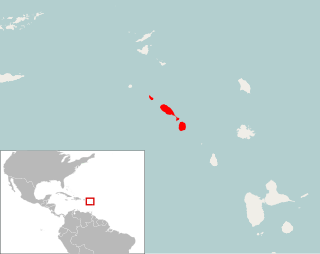
Pennatomys nivalis is an extinct oryzomyine rodent from the islands of Sint Eustatius, Saint Kitts, and Nevis in the Lesser Antilles. The only species in the genus Pennatomys, it is known from skeletal remains found in Amerindian archeological sites on all three islands, with dates ranging from 790–520 BCE to 900–1200 CE. No live specimens are known, but there are several historical records of rodents from Saint Kitts and Nevis that could conceivably refer to Pennatomys. The animal apparently belongs to a group within the tribe Oryzomyini that includes many other island-dwelling species.
Megalomys camerhogne is an extinct species of giant rice rat from Grenada in the genus Megalomys. It is known only from Pearls, an archeological site in Saint Andrew dated to about 400 to 1650 CE. Though there are no historical records of its occurrence on Grenada, it is likely that the species survived until European contact in the 16th century. Its extinction may be related to competition with black rats or to predation by the small Indian mongoose, which was introduced to Grenada in the 1870s.


